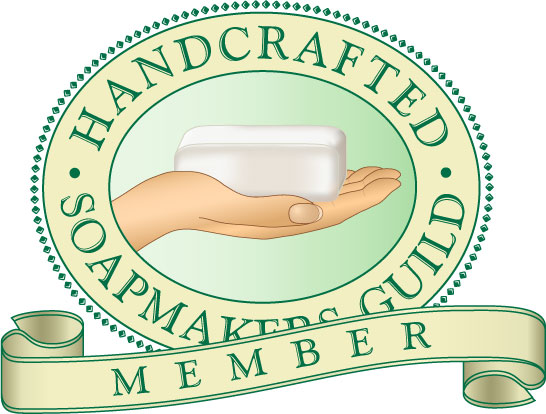Professional credentials and soap making
Have you noticed the rise in hand made, hand crafted things out there? Farmers markets overrun with wonderful new home grown produce, and specialized foods. Art markets pop up with more and more handcrafted things. When we started making soap in 2010 we knew of only perhaps 3 other people making cold process and cold process oven process soap. The field has grown, with people buying blocks of “melt and pour” soap from places like Pat Catans and making their own soap fast.
People who buy handcrafted soap know the difference… they read the ingredients, and they know what they want in soap…. this begins to differentiate cold processed soap from melt and pour. But in all of our research we discovered a professional guild – the Handcrafted Soapmakers Guild. We applied, submitted all the necessary documentation and photos, and submitted our work to their watchful eye. We were delighted to be accepted into this guild. Membership allows us access to a professional soap makers forum where you can ask questions, seek advice, find recipes and guidance on formulas. In addition, this guild provides insurance for the soap making process, product and the business. We especially enjoy knowing that the soap we create is worthy to bear the HSG seal. Now you will never see a melt and pour soap maker with that distinction.
Being a part of this professional organization also gives the following benefits:
- Certification on soap making processes
- A network of experts, and peers
- A library of resources
- Continual learning
So when you see a bar of soap for sale, look for the HSG seal – That seal is offering you the assurance the soap was made rightly, well done, and with care, and conforms to higher standards. It is always a great plan to make sure any products you buy bear the list of ingredients on the label. And feel free to ask the soap maker about any of those ingredients. Soapmaking is a fine art of getting the chemical formula in balance… adequate oils to lye, and adequate balance of oils to superfats. The mark of a professional is the ability to tell you about any ingredient you ask about – a history of the ingredient, how it is used and for what purpose. We like to go beyond and find out the story at the source. In some cases it has been fascinating reading, giving way to a strong sense of doing good socially and economically. (Argan oil is one such example)

You must be logged in to post a comment.